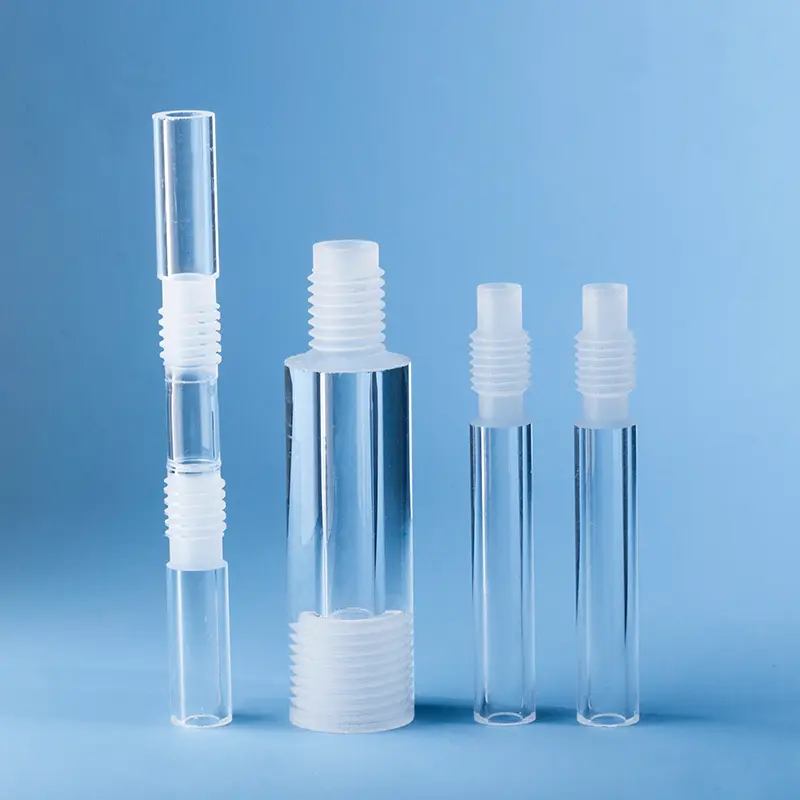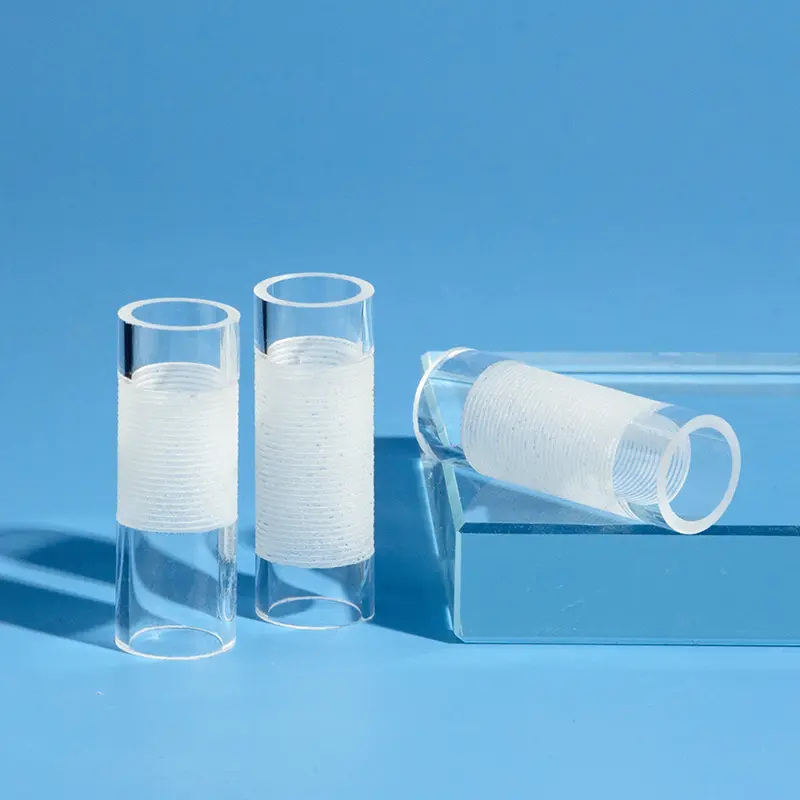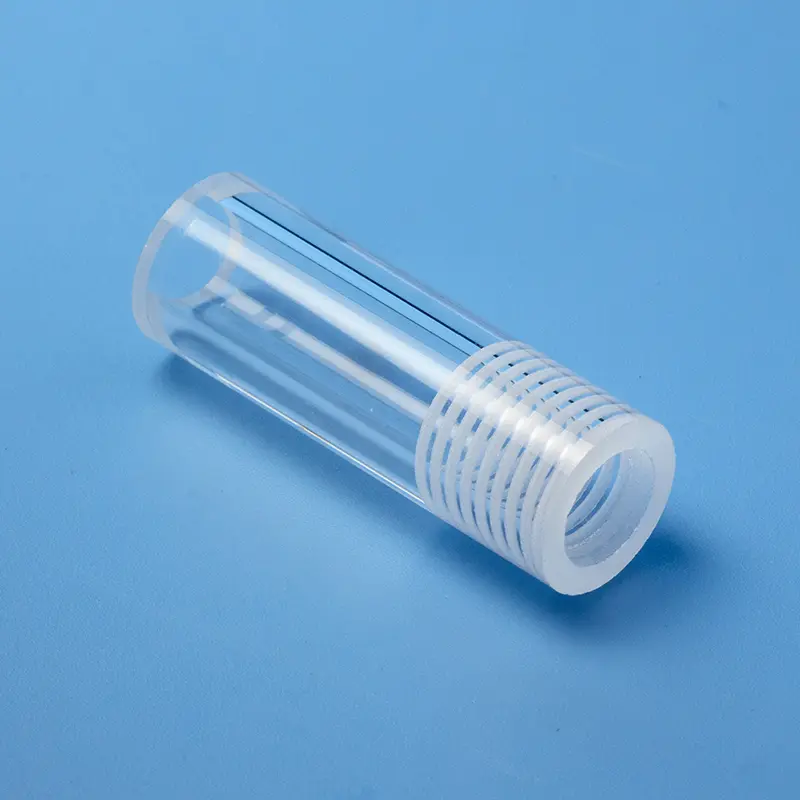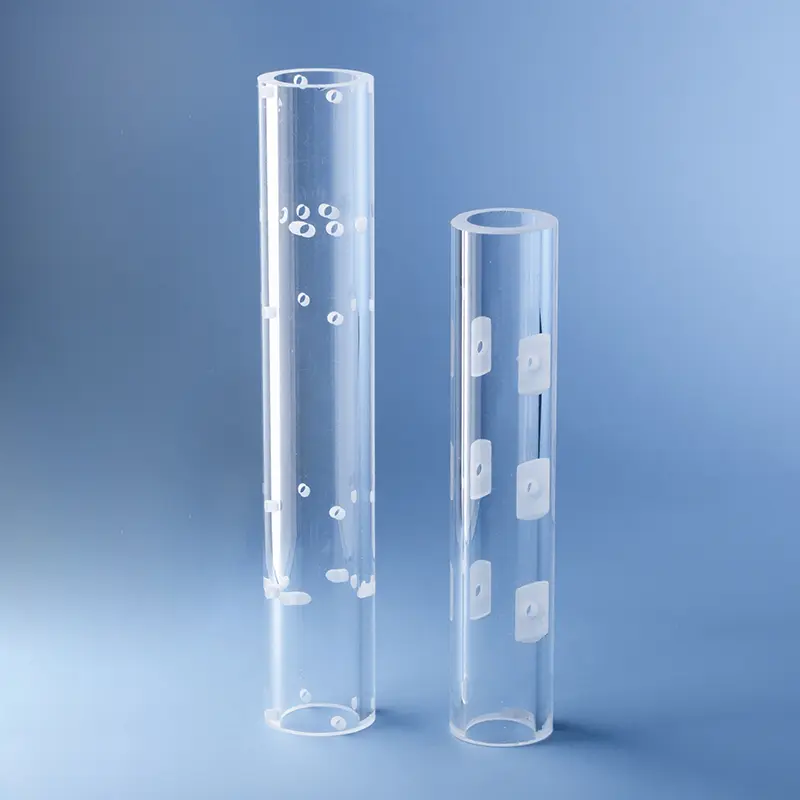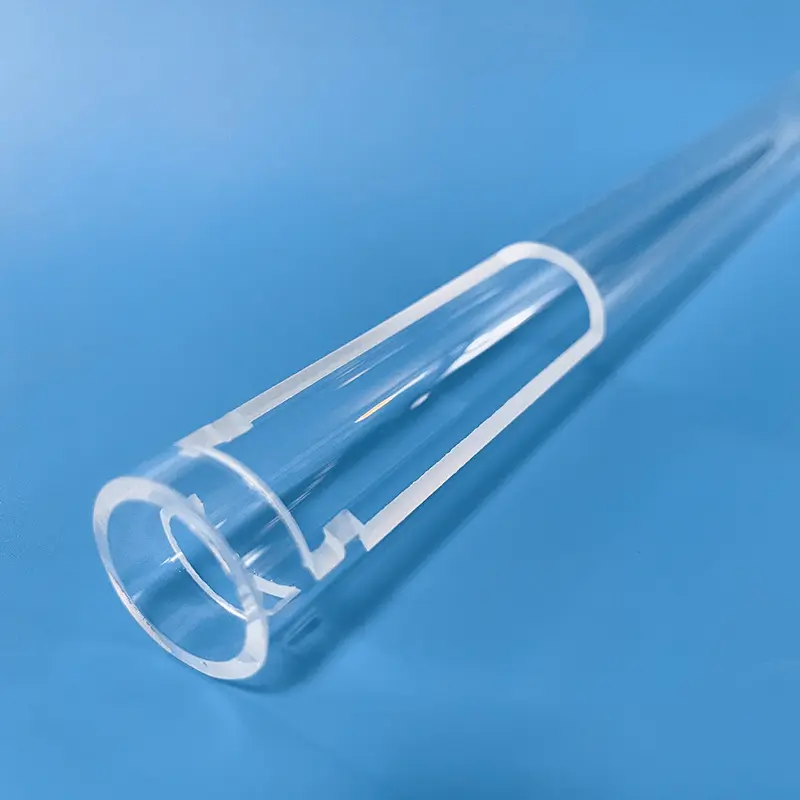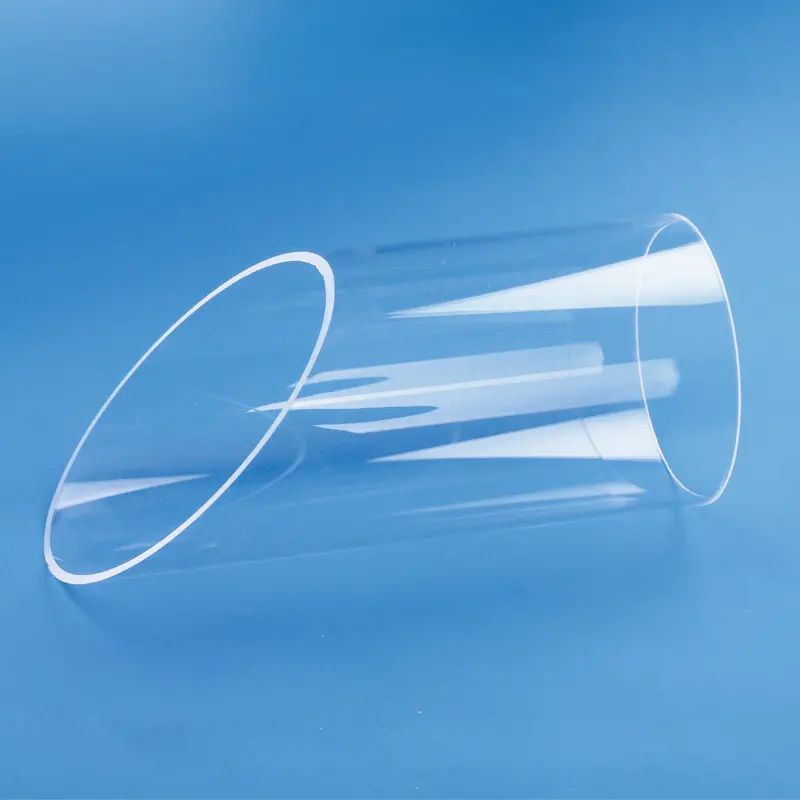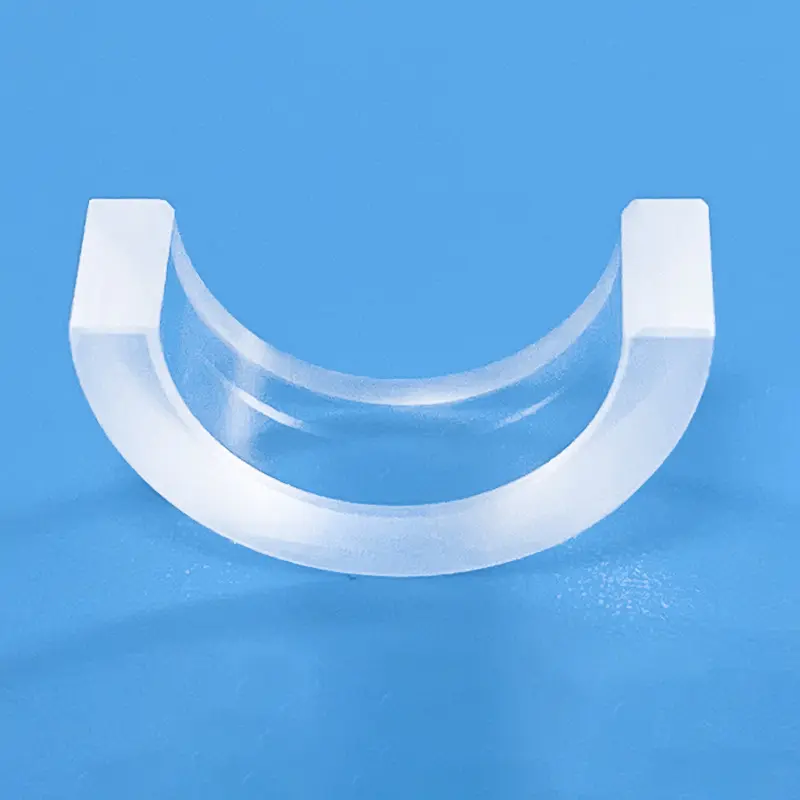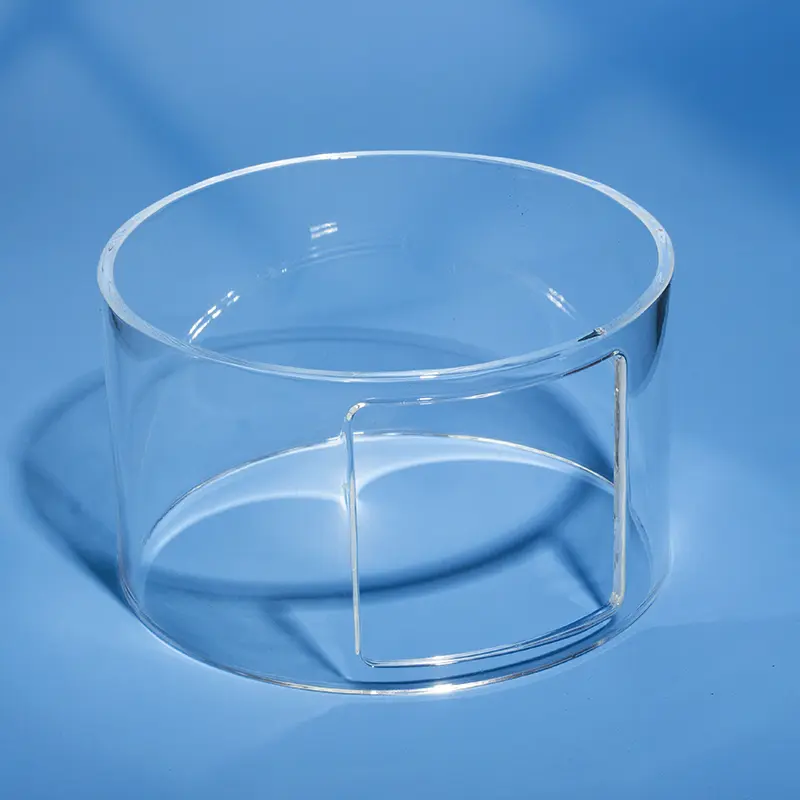Cold precision machining of quartz tubes primarily involves the use of mechanical processing techniques such as slicing, slotting, drilling, grinding, and polishing of raw quartz tube materials to manufacture specific products. These processing steps typically require high-precision equipment such as diamond abrasive cutting machines, laser cutting machines, and high-pressure waterjet cutting machines to ensure that the machined quartz tubes meet the required dimensions and shapes.
| Property Content | Property Values |
|---|---|
| SiO2 | 99.99% |
| Density | 2.2×10³ kg/cm³ |
| Hardness | 5.5 - 6.5 Mohs' Scale 570 KHN 100 |
| Tensile Strength | 4.8×10⁷ Pa (N/mm2) (7000 psi) |
| Compression Strength | >1.1×10⁹ Pa (160,000 psi) |
| Coefficient of Thermal Expansion | 5.5×10⁻⁷ cm/cm·°C (20°C-320°C) |
| Thermal Conductivity | 1.4 W/m·°C |
| Specific Heat | 670 J/kg·°C |
| Softening Point | 1730°C (3146°F) |
| Annealing Point | 1210°C (2210°F) |
| Strain Point | 1120°C (2048°F) |
| Work Temperature | 1200°C (2192°F) |
| Electrical Resistivity | 7×10⁷ ohm cm (350°C) |
| Size | Customized |
| Logo | Customized Logo Accept |
High-Temperature Resistance
Quartz tubes can withstand temperatures up to 1250°C without deformation or cracking.
Corrosion
Resistance
These tubes demonstrate exceptional resistance to acids, alkalis, and other corrosive substances.
High Light
Transmittance
Quartz glass provides excellent light transmission across ultraviolet to infrared spectra.
Low Thermal Expansion Coefficient
The minimal thermal expansion coefficient ensures dimensional stability under significant temperature changes.
Common processing methods include diamond abrasive cutting, laser cutting, high-pressure waterjet cutting, precision grinding, lapping, and polishing.
Cold precision machining of quartz tubes is widely used in industries such as semiconductors, optoelectronics, medical devices, aerospace, and chemical analysis because these industries require high precision and high purity quartz products.
The advantages of cold machining are that it maintains the original physical and chemical properties of the quartz material and avoids changes in material performance that can be caused by thermal processing. It also allows for high-precision machining and high surface quality.
Ensuring machining precision requires the use of high-precision machining equipment and precise measuring tools. It also requires strict quality control procedures, including precise design prior to processing, real-time monitoring during processing, and precise measurements after processing.
Frequently asked questions
Quartz glass is a hard and brittle material with excellent physical and chemical properties, extremely high mechanical hardness, good electrical insulation, high temperature and corrosion resistance, low and stable delay performance, good light transmittance, etc. It is widely used in semiconductors, optics, electricity, chemistry, aerospace, automobiles and other fields. Hard and brittle materials are difficult to process, and many fields urgently need cutting processes with small edge collapse, less material loss, low cross-section roughness, and a wide cutting thickness range. The traditional cutting method of quartz glass is mechanical cutting, that is, wheel cutting. Non-traditional cutting methods include water jet cutting, electrochemical discharge wire cutting, continuous laser cutting, etc. Mechanical cutting has low cost, but the contact between the wheel and the material causes large tool wear, and the material is easily contaminated by the tool. Quartz glass is prone to edge collapse, microcracks, and residual stress, which affects the strength and performance of the material! It is difficult to achieve curve cutting and requires post-processing, such as grinding and polishing. Laser cutting does not directly contact the material, has no contact stress, and can perform complex curve cutting. Picosecond laser has the advantages of small spot diameter, high precision, short action time with the material, and small action area, and is suitable for the processing of hard and brittle materials.
。



